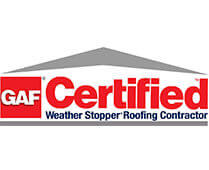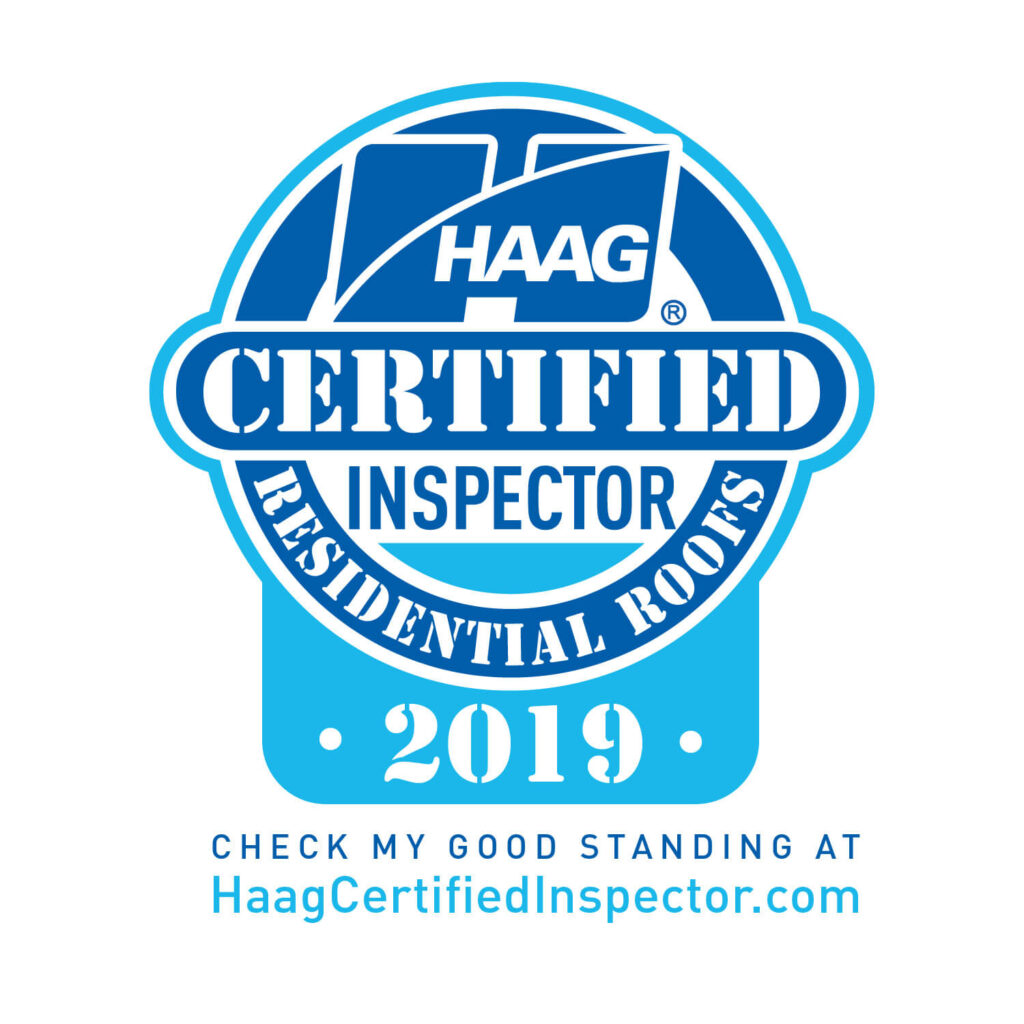Emergency roof repair means fixing sudden damage to a roof that needs fast action to stop leaks or more harm. In Canada, heaving, snow and ice can make roofs sag and cause leaks. Heavy winds can rip or shatter shingles, or even tear areas of the roof completely off.
Timely repairs are crucial in preventing water intrusion that can lead to larger issues such as mold or wood rot. In most cases, roofers will deploy tarps, sealants, and other temporary patches to tide you over until a permanent repair.
Learning who to call and understanding the order of steps can save your city time, money, and headaches. This guide will help you navigate the initial steps of a roof emergency. You’ll learn who to call and home safety advice for Canadian households.
Key Takeaways
-
Recognize emergency roof damage when you see it. Look for leaks, missing shingles or an area sagging, especially after Edmonton’s harsh weather events.
-
Tip 1 First and foremost, protect your own safety! After that, take photographs of the storm damage for your insurance company before attempting any temporary repairs.
-
Don’t do DIY repairs in dangerous situations, since wrong moves can cause increased damage and invalidate insurance claims or warranties.
-
For a trusted, licensed, and insured roofer in Edmonton for emergency roof repair, call us—24/7! In doing so, these professionals employ safe and effective practices tailored to Alberta’s unique climate.
-
Prevent future emergencies by scheduling regular roof inspections. Regularly clean your gutters and use roof materials that are resistant to Edmonton’s intense snow, ice, and wind.
-
Don’t hesitate, or you’ll pay more in repairs! This saves you on your overall insurance premium, protects your insurance coverage, and keeps your home safe and secure.
Is Your Roof Problem an Emergency?
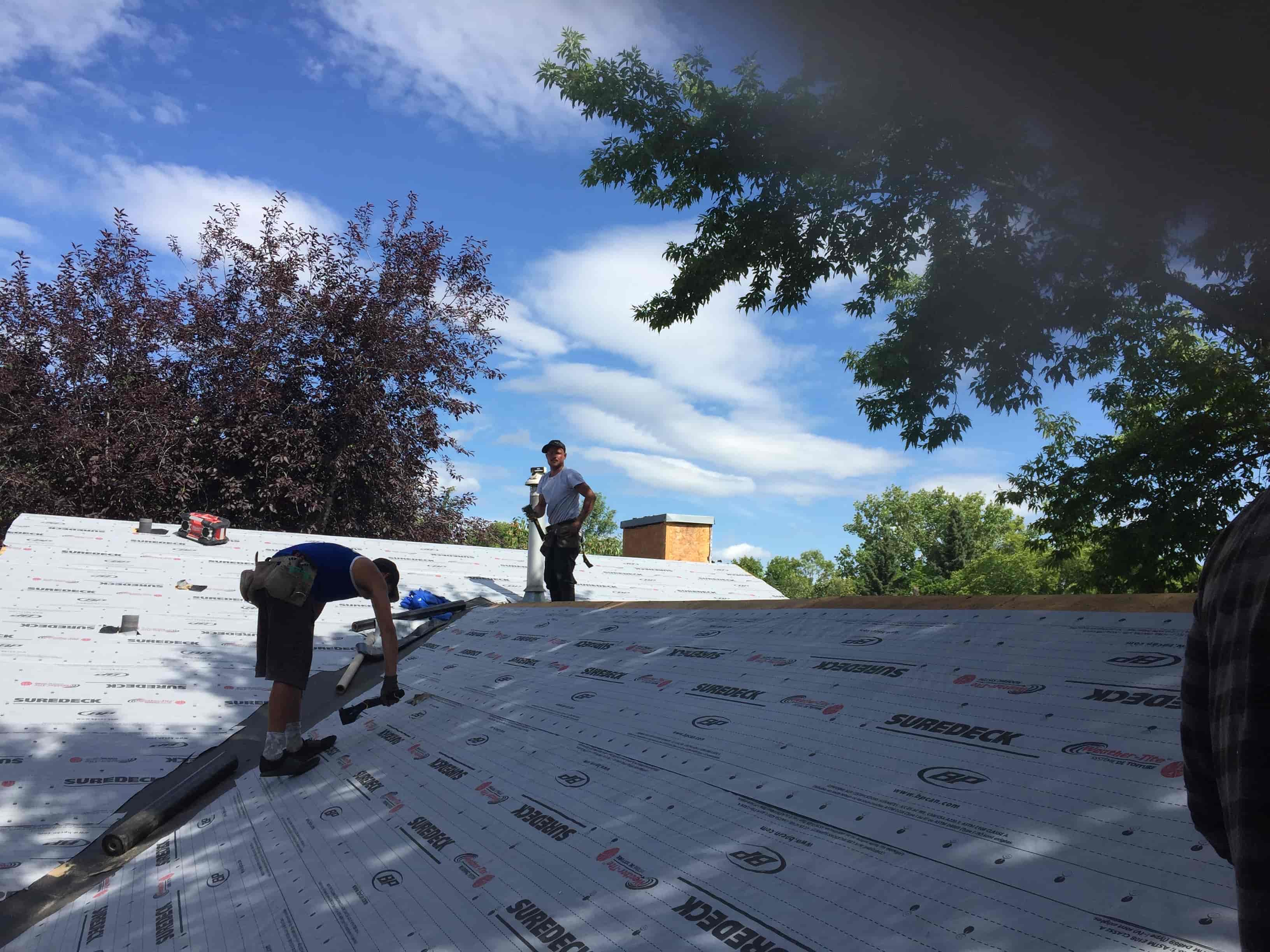
While not every roof problem requires an immediate solution, there are times when swift action is crucial. Understanding the difference can help keep homeowners safe and prevent costly bills down the road.
Edmonton’s tough weather means roof problems can get worse fast, so it’s smart to take a close look and know what to do next.
Spotting Urgent Roof Damage Signs
Ceiling and wall leaks or water stains indicate that water is getting in. If you notice stains or leaks developing, the issue may be worsening with each rain or snow shower.
First, missing or cracked shingles after a storm allow more water intrusion and leaks into your home. Ceiling or roof sagging usually indicates a more serious issue has developed, such as water damage causing wood to rot.
Debris and tree branches landing on your roof can punch holes into or break shingles. Don’t let that go; get to the bottom of it today!
Minor Leak vs. Major Failure
A small dribble from a dormant leak doesn’t always feel like an emergency. If you leave it unchecked, it can set up mold with the ideal breeding ground.
Large openings, warped or buckled roof decking, or areas that are sinking in require emergency intervention. Once insulation or framing is visible, the protective layer of the roof is lost, leading to increased energy expenses and further damage.
Edmonton Weather: The Biggest Culprit
As heavy snow accumulates, the weight can cause a roof to collapse in on itself. Hail shatters shingles, denuding them, and wind can blow off the layers altogether.
Quickly fluctuating temperatures can create ice dams that prevent water from flowing off and push it underneath.
Why Waiting Can Be Disastrous
Emergency repairs are always more expensive and much more dangerous than proactive replacement. If leaks are not addressed, the resulting mold can lead to serious health consequences.
Delays in damage reporting may adversely impact claims with insurers.
What To Do Right Now (Safety First!)
In a commercial roofing emergency, what you do first makes a huge difference in safety. By acting fast, you’re protecting your family and your home. Local weather here in Los Angeles might hit you with an unforecasted rainstorm or wind—every second counts.
Safety should always come first, not speedy solutions. Avoid making repairs while the storm is still active—wait until conditions are safe.
-
Move everyone away from damaged spots.
-
Use flashlights, not candles, to check for damage.
-
Fill your emergency kit. Gather protective gloves, hard hats, buckets, towels, plastic sheeting, duct tape and other supplies.
-
Take photos and videos of the scene.
-
Find your insurance details and call your agent.
-
Contact a licensed, insured roofer—look for 24/7 help.
1. Prioritize Your Family’s Safety
If you think the roof may be compromised, evacuate the area immediately. Keep children and pets away from leaks, downed power lines, or puddles on the floor. Be mindful walking to prevent falls.
Designate a meeting place outside, such as your driveway or a neighbor’s porch.
2. Control Water Damage Inside
Remove personal belongings and furniture from flooded areas. Consider using buckets or even sandbags to prevent water from moving throughout the building. If rooms are leaking, cut power to them to prevent electrocution.
Use towels or fans to dry floors and walls.
3. Look for Obvious Exterior Damage (Safely)
Scan the roof line with binoculars from the ground if possible. Look for missing shingles or torn back metal. Avoid climbing up in high winds or low light conditions.
Always wear gloves and a hard hat when in close proximity to wreckage.
4. Take Photos and Videos Now
Capture wide-angle photos, if possible, in order to show the overall condition of the area. Document the date and time of your photography.
Take notes and keep records for your insurance claim.
5. Find Your Insurance Policy Details
Understand what your insurance policy covers. Read your policy to understand what is or isn’t covered. Now, if you have questions, call your agent.
Prepare to get your claim filed quickly.
6. Call a 24/7 Los Angeles Roofer
Get in touch with an experienced, 24/7 Los Angeles roofer. Post photos and scientific information documenting the damage.
Inquire about their response time and how quickly they would be able to arrive.
Dangers of DIY Emergency Repairs
We get it—getting up on your roof to patch an emergency repair can feel like the DIY fix-all solution to your problem. Yet, it often leads to larger problems and costs down the road. There are very real dangers that accompany DIY work, particularly when you lack the appropriate tools, skills and safety equipment.
Aside from the clear risks, an emergency repair can exacerbate the situation, damaging your roof as well as your bank account.
Why Climbing Your Roof Is Risky
If your home is one of the many older homes with tile roofs, the risk of a fall becomes even more dangerous. Wet or slippery tiles following a rainstorm can make even the simplest repair a quick trip to the ER. Even when it’s not raining, one wrong footfall can result in painful fractures, or potentially even death.
Just one misplaced foot can break tiles or shingles. This type of damage can cause leaks and far more costly repairs. If electric wires are down during a storm, there’s an additional danger of electric shock. All these dangers illustrate why so many homeowners do more than just attempt repairs themselves; they call for emergency assistance.
Making the Problem Worse
DIY emergency repairs are usually the wrong call. Most people fail to see all of the roof damage. A DIY emergency repair could patch a visible cracked or missing shingle while overlooking concealed leaks or compromised underlayment.
Either improper sealants or attempting sealants or patches with plastic sheeting that provide no resistance to heavy rain or wind. In many cases, these temporary fixes hold up for only a few weeks if that before exposing your home to additional water damage.
Eventually, that same DIY repair will lead to further damage and a potential collapse to the roof structure, causing larger issues down the road.
Insurance Issues with DIY Fixes
With DIY fixes, you may create a more significant insurance issue. Most roofing material warranties automatically void if the material is installed or repaired by an unlicensed party. Home insurance adjusters will typically deny claims on the basis that emergency repairs were not carried out by a qualified professional or need written documentation.
Disputes over the need for emergency repairs can prolong claims, pushing back essential assistance. For one, having a licensed professional roofer on your side ensures that your repairs are documented, which can expedite future claims.
How Professionals Handle Roof Emergencies
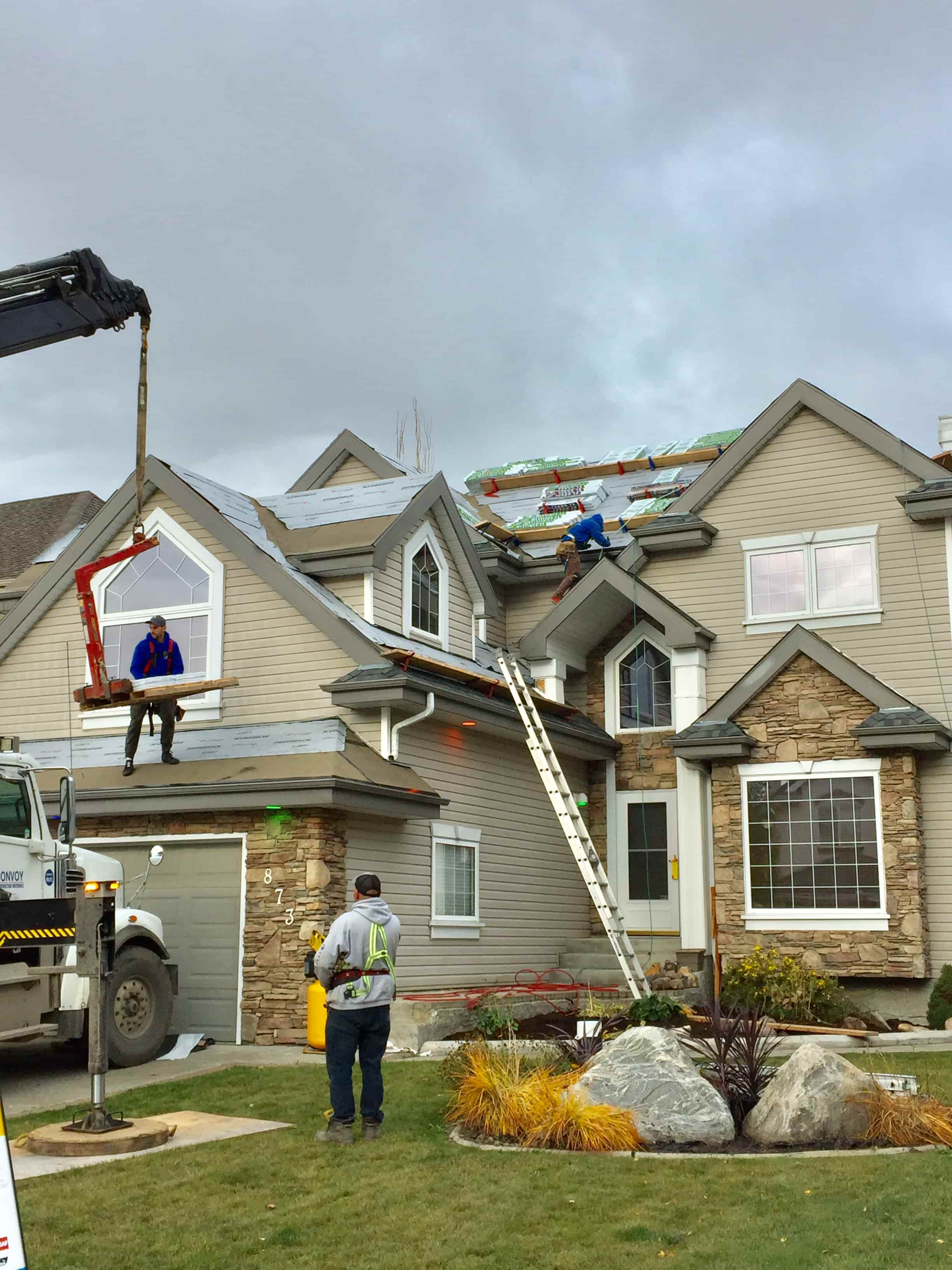
When a roof emergency hits, professionals act quickly but have a well-defined process. It is their diligent efforts that prevent further destruction and provide comfort to many homeowners. Your emergency roofing team will provide you with 24/7 assistance, ensuring that your call is answered—typically within 24-48 hours.
The table below compares common emergency services:
|
Service Type |
Typical Response Time |
Main Focus |
Example Fixes |
|---|---|---|---|
|
Damage Assessment |
Same day |
Safety & triage |
Roof inspection |
|
Temporary Repairs |
Same day |
Stop more damage |
Tarp, shingle secure |
|
Permanent Repairs |
1–7 days |
Long-term solution |
Full shingle replace |
Our Rapid Response Process
Teams first check if the home is safe and look for big issues like water pouring in or missing shingles. They put high-need houses first.
Crews bring tarps, roofing cement, and tools to patch leaks or cover open spots. Throughout, they keep owners in the loop about next steps and timing.
Expert Damage Assessment Techniques
Roofers will thoroughly inspect both the interior and exterior. They check for the telltale signs, such as wet ceilings, deck buckling, or exposed framing.
Tools like drones or infrared cameras are used to identify moisture or weak spots hidden from view. Each discovery is documented in order to determine the appropriate repair.
Safe Temporary Fixes We Use
Typical emergency measures might be tarping over a hole, applying cement to seal a crack, or nailing down the loose shingles.
Roof Emergency Tarping
Tarping is the most crucial step to keep rain and water out. We take safe temporary fixes and recommend that owners avoid the roof until permanent repairs can be made.
Planning for Permanent Repairs
After the initial emergency repair, crews will develop plans for permanent repairs. Professionals select materials that will withstand the local climate and the aesthetic of the home.
Inspections for All Fixes
Crews inspect any repairs before final payment and provide a full report and recommendations to prevent future problems.
Common Edmonton Roofing Emergencies
Edmonton homeowners experience real roofing challenges largely dictated by our severe winters, unpredictable weather patterns, and extremes in the seasons. Local weather and other conditions frequently make for roofing emergencies in the area. If left unattended, these little emergencies can result in extensive damage.
The following are typical emergencies seen across the city:
-
Heavy snow buildup
-
Ice dams at roof edges
-
Damage from wind or hail storms
-
Sudden major leaks
-
Missing or loose shingles
-
Damaged flashing or gutters
Local seasonal changes greatly affect these issues. With winter comes heavy snow and ice, and with spring and summer storms, the threat of wind and hail damage increases. Though most materials can be constructed with cold weather in mind, Edmonton’s freeze-thaw cycles add additional stress on roofing materials.
We find that 85% of Edmonton residences show signs of trouble that are likely to develop into emergencies. The best way to avoid roofing emergencies is to stay vigilant and monitor your roof year-round.
Perform regular roof inspections during the spring and fall to identify these early warning signs. Watch for shingle granules accumulating in your gutters, daylight peeking through in your attic, or water spots on your ceilings. By using high quality roofing materials and taking immediate action when you notice something wrong, you can save yourself much bigger issues in the future.
In either case, fast response to leaks or blown-off shingles can save homeowners from enduring costly, long-term harm and repairs. Being proactive involves being aware of the signs, booking inspections before big problems develop, and bringing in experts as soon as they’re needed.
Edmonton roofs require consistent maintenance and inspections to withstand the city’s severe and ever-changing climate.
Understanding Emergency Repair Costs
The emergency roof repair costs can be a surprise to anyone, when an unexpected leak develops or when roof storm damage occurs. It’s important for communities to understand what is causing these costs and how decisions made at the beginning can move the final bill.
Below is a quick table outlining some major factors that shape the price of an emergency fix:
|
Factor |
Details & Examples |
|---|---|
|
Extent of Damage |
Small leaks vs. major holes, water damage, or structural issues |
|
Labor Costs |
Regular hours vs. after-hours/holiday work (20–30% markup) |
|
Material Selection |
Type and quantity—shingles, metal, specialty materials |
|
Location |
Urban ($500–$2,000+) vs. rural ($300–$1,500) |
|
Urgency & Availability |
Scarcity after storms can double material costs |
|
Temporary Fixes |
Tarping ($200–$1,000 based on size/complexity) |
Factors Influencing the Price Tag
Most importantly, it depends on the type and scope of damage. In one case, a small leak in a roof might be easily patched, costing a few hundred dollars. When there is significant wind or hail damage, the costs can exceed $1,000.
Material selection is the other half of it—standard asphalt shingles tend to be much less expensive than metal or specialty shingles. Including labor for emergency repair work that’s needed on off-hours or holidays will increase costs by 20–30%.
During peak seasons or following major storms, materials become increasingly difficult to source, further increasing costs. Materials often account for about 60% of the cost, while labor is 40%.
Emergency vs. Scheduled Repair Costs
Emergency repair costs are often much higher than scheduled repairs. Emergency repairs typically require high-cost labor and limited opportunity to procure lower-cost materials.
Addressing concerns at an earlier stage, such as preventative measures like sealants or gutter cleaning, can reduce upcoming expenses by as much as 60%. Preventative maintenance addressed during the off-season reduces cost, too.
By proactively addressing emerging issues, repair costs can be reduced by 30–40%.
Navigating Insurance Claims in Alberta
Filing a claim begins even before an emergency with clear, helpful records like comprehensive photos, lists of damage and repair estimates.
Stay in contact with your insurance agent and document every conversation. Don’t miss important steps, such as delaying your report or failing to get enough estimates.
Getting multiple quotes—ideally two or three—ensures they are paying a fair cost.
Preventing Future Roof Emergencies
Preventing future roof emergencies in Edmonton requires consistent, pragmatic action. Local climate ranges from brutal, humid summer heat to deep, frigid winters, so roofs in this region experience extreme weather conditions. Homeowners can reduce the chances of roof emergencies with these easy practices and prudent decisions.
Routine inspections, using high-quality materials, and being proactive with maintenance can all contribute to unexpected surprises and repair costs.
Here are some preventative measures to keep in mind:
-
Assure regular roof inspections at least 2 times a year (spring and fall preferably).
-
Keep gutters and downspouts clear of leaves and debris.
-
Replace worn weatherstripping around skylights each year.
-
Check flashing around chimneys, vents, and skylights every year.
-
Remove snow and ice buildup quickly but safely.
-
Use roofing materials rated for Alberta’s wild temperature shifts.
-
Repair minor leaks or roofing damage immediately after it appears.
Importance of Regular Inspections
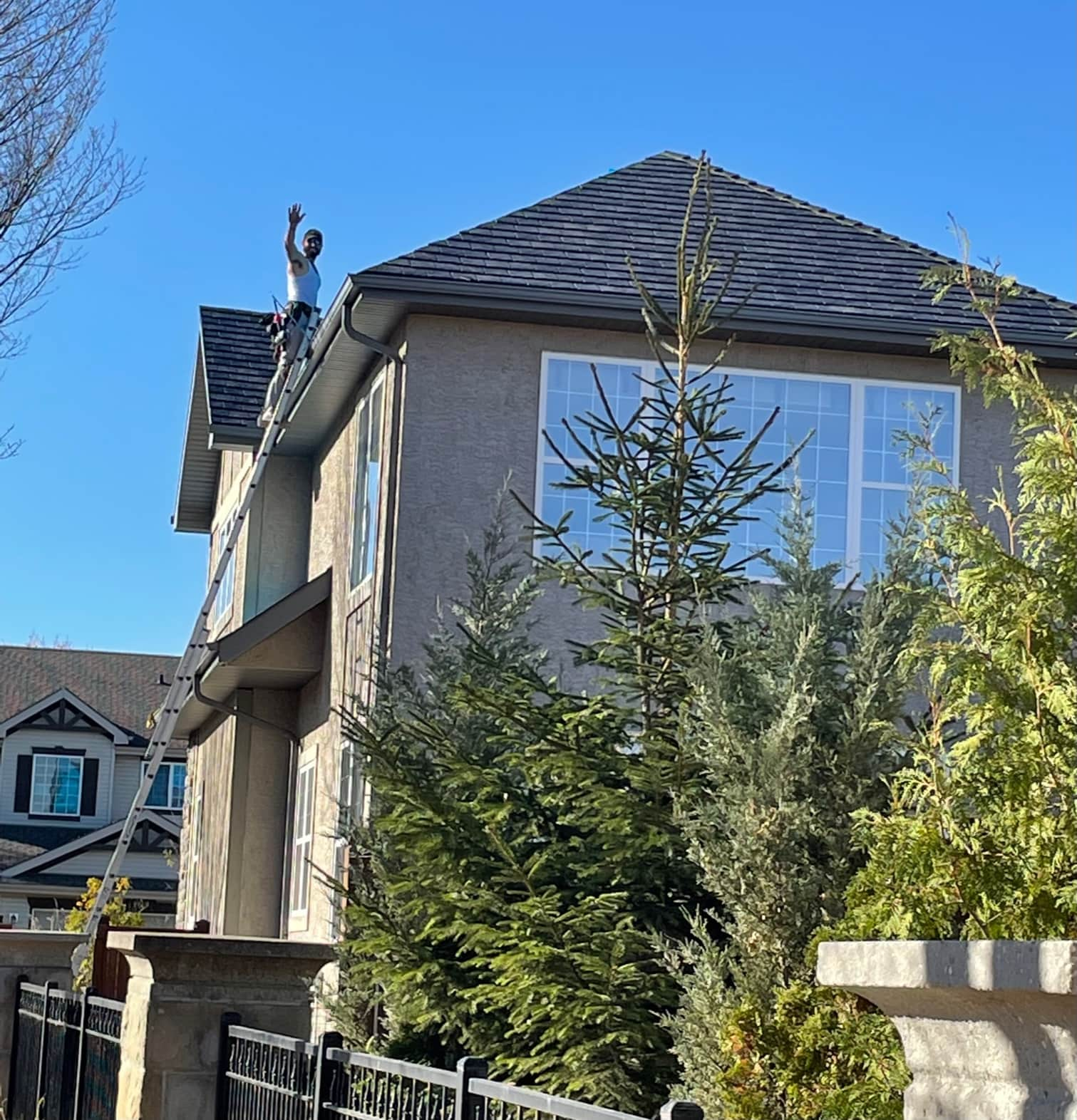
Regular inspections can detect cracked shingles, loose flashing, or clogged gutters before they become leaks. Only a licensed roofer will be able to identify problems that could be easily fixed with regular inspection and maintenance.
A lot of warranties require these inspections to remain effective. That’s why regular inspections, twice a year, once right after winter and once right before fall, are a no-brainer for the average home.
Seasonal Maintenance for Edmonton Homes
Every season has its own set of tasks to keep your home in great shape. Spring remove debris accumulated over the winter months and inspect your roof for damage from winter storms.
Summer is the best time to search for cracked or sun-baked shingles. In autumn, unclog gutters and cut back trees and shrubs that hang over the roof.
Ice dams form when snow or ice melting on warmer roof areas can’t drain into gutters, causing water to back up and possibly create leaks.
Choosing Materials for Alberta Weather
Choosing materials for Alberta weather is crucial. Not all shingles are equipped to withstand Edmonton’s fall cold snaps or summer hail storms.
As a general rule, asphalt shingles with a high impact rating or metal roofs tend to outlast other roofing materials. No matter the material, proper installation is key.
Even the best materials can fail when there are gaps or weak spots.
Clearing Snow and Ice Safely
The added weight from snow can cause a significant amount of stress on rafters. Always remove snow and ice with a roof rake with a long handle from the ground, and never chip at ice with sharp-edged tools.
Make your snow removal safer. Always work with a buddy and wear slip-resistant boots. When in doubt, if it appears dangerous, contact a professional.
Conclusion
Roof trouble in Edmonton can hit fast. Leaks, ice dams, or blown-off shingles leave homes in a rough spot. Getting a pro to check things right away keeps water and mold out, and saves money down the road. A good roofer shows up quick, works safe, and uses the right fix for each job. It pays off to keep an eye out for loose shingles or blocked eaves, so small problems don’t blow up. Got a roof that looks rough or leaks after a storm? Call a local roofer now. Quick steps and smart help can keep homes dry and safe, even in wild Alberta weather. Don’t wait—get peace of mind before the next storm rolls in.
Frequently Asked Questions
How do I know if my roof issue is an emergency?
If rain is flooding into your house, time to move quickly! If you are seeing an unstable structure or visible sagging post-storm, this is a major emergency. If you are dealing with an emergency roof repair in Edmonton, call a professional immediately.
What should I do while waiting for emergency roof repair?
Keep away from the damaged area, remove valuables and personal items, keep buckets under leaks. Do not attempt to get on the roof yourself for safety concerns alone.
Can I fix an emergency roof problem myself?
Not only are DIY repairs dangerous, but you can actually cause more harm than good. With Edmonton’s drastic weather and local building codes, you’ll want the professional expertise for your safety as well as insurance protection.
How quickly can Edmonton roofers respond to an emergency?
Generally speaking, most trustworthy Edmonton roofing contractors should be available to respond within minutes and hours, providing emergency service 24/7 for serious cases, especially during inclement weather.
What roof emergencies are common in Edmonton?
Storm damage, ice dams, wind-lifted shingles and leaks from heavy rain or melting snow are frequent emergencies in Edmonton.
Will my home insurance cover emergency roof repairs?
Most home insurance policies in Alberta do protect against unexpected roof damage from storms, accidents, or other causes. Consult your policy documentation or speak with your provider to get specifics.
How can I prevent future roof emergencies in Edmonton?
Plan for regular professional inspections, keep gutters clear, and don’t delay on minor repairs. Given Edmonton’s unique climate, maintaining a roof should be a priority.
Not what you were looking for? Safe Roofing also offers the following services:
Safe Roofing’s Certifications and Qualifications
Manufacturer Certification: IKO (preferred installer)



